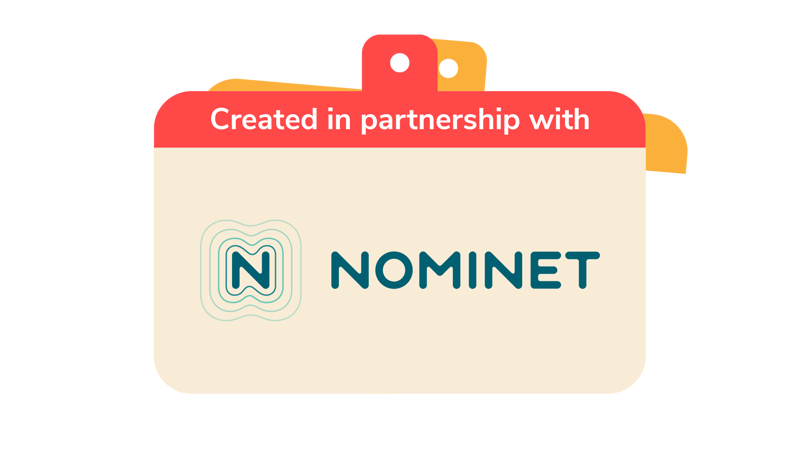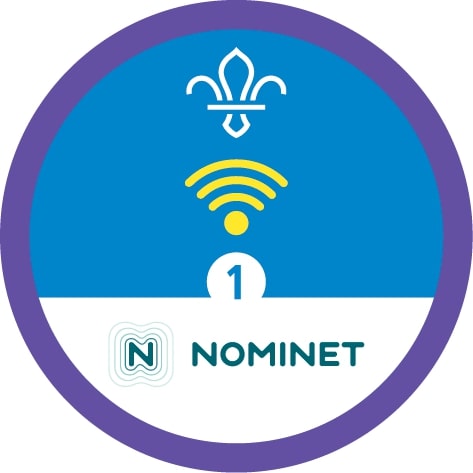
Share, don’t share
You’ll need
- Scissors
- Scrap paper
- Pens or pencils
- Boxes or hoops
Before you begin
- Print and cut out the ‘Care to share?’ cards. You could also make your own by writing the descriptions on pieces of scrap paper.
- Label one box or hoop with ‘share’ and one with ‘don’t share’. Put one box or hoop in one corner of the room, and the other in the opposite corner.
- Spread out the ‘Care to share?’ cards face down in the middle of the meeting place. Choose which cards are appropriate for your young people.
- If you’re working towards Stage 4 of the Digital Citizen Activity Badge make sure you complete the last part of the activity to meet requirement 1.
To share or not to share?
- The person leading the activity should show everyone the Yellow Card. They should explain that it’s Scouts’ code of practice to keep everyone safe and go through what it says.
- Explain that it’s important to know what’s safe to share online. Even if people aren’t old enough to be on social media yet, it’s important to learn how to be safe so they’re ready.
- The person leading the game should ask some questions to get everyone thinking. For example, should people share the password to their email address? No. What about a funny picture of a pet? Sure!
- Everyone should think about the digital actions that other people make too. See if anyone can think of any actions that their friends might take that could make some of their own information public.
Play the game
- Everyone should split into two teams. Each team should stand in a space away from the cards and boxes.
- When the person leading the game says ‘go’, the first person in each team should run to the ‘Care to share?’ cards and turn one over.
- The player should quickly decide whether it’s OK to share that thing, or whether it shouldn’t be shared. They should take the card to the right box and pop it in (face up) before joining their team.
- Once the player gets back to their team, the next player should go and repeat steps two to four.
- Keep going until everyone’s had a go.
- The person leading the game should collect the boxes and hoops, and everyone should discuss where the cards ended up.
- If there’s time, everyone could add some extra cards of their own and play again.
Keep your information safe
- Everyone should find a partner and talk about how they found the game. Was it easy to decide what was safe to share online?
- Each pair should think about what bits of information someone could find about them online. Take some sticky notes or small pieces of scrap paper, write one piece of information on each and put them on the floor face up.
- For each note, they should try and come up with an idea of an action they can take to protect themselves or hide the information if they wanted to.
- When they have an idea, flip over the note so that the info is no longer visible and write it on the reverse side.
- After a few minutes, everyone should have a look at their notes. Is there any information left visible that they couldn’t hide?
- Ask everyone to share some ideas from their discussion with the group. If they had any notes or bits of information they couldn’t hide, see if any other groups thought of some actions that could help them out.
- A photo of your dog: share. Just make sure the address isn’t obvious on their collar or in the background.
- A photo of you and your little sister: don’t share. Always check with an adult if you can share a picture of a younger sibling.
- Your road name: don’t share. You don’t want anyone to know where you live.
- Your holiday ticket: don’t share. It may have personal details like your address or card information on it. People may also be able to copy your ticket and use it.
- Your teacher: don’t share. Never share photos of people without their permission (including if they don’t know the picture was taken).
- A private message: don’t share. Tell an adult if it’s from a stranger or from someone asking you to keep a secret.
- A mean message or comment: don’t share. Always do the right thing – don’t be a bystander. Speak to a trusted adult if you see bullying.
- A beautiful landscape: share. It’s nice for others to enjoy beautiful photos too.
- A photo of an animal being funny: share. Just make sure the animal looks like it’s safe and healthy.
- Your phone number: don’t share.
- Party invitation: don’t share. People who aren’t invited may see it and try to attend, and you should never share your address or location online.
- A Christmas tree or festive symbol: share.
- A book you’ve enjoyed: share. Other people may want to read it too.
- A congratulations post: share. It’s nice to be positive and support others.
- Your exact location: don’t share. It’s safer not to tell people where you are.
- Your location: don’t share. It’s safer not to tell people where you are.
Reflection
This activity was all about communication and developing skills. Did people find it easy to sort the cards? Were there any that were harder than others? It can be exciting to go on holiday, for example, but sharing ticket details could help scammers, give away personal information, and tell people your home’s empty. What could people do instead? They could wait and share photos without personal information in after their holidays. When can it be useful to share online? People can share enjoyable stories and videos, but they can also raise awareness for good causes, for example, by sharing charity appeals.
Deciding what to share online is all about assessing risk – it’s a great skill to learn and one we use all the time, just like when you plan what first aid kit you need if you’re going on a hike. At Scouts we also have our Yellow Card so that everyone knows the actions they can take to keep each other safe in person, or online. Remind everyone that if they’re ever nervous, scared, or unsure about anything they see online they should always talk to an adult they trust.
Safety
All activities must be safely managed. You must complete a thorough risk assessment and take appropriate steps to reduce risk. Use the safety checklist to help you plan and risk assess your activity. Always get approval for the activity, and have suitable supervision and an InTouch process.
- Scissors
Supervise young people appropriately when they’re using scissors. Store all sharp objects securely, out of the reach of young people.
- Active games
The game area should be free of hazards. Explain the rules of the game clearly and have a clear way to communicate that the game must stop when needed. Take a look at our guidance on running active games safely.
- Online safety
Supervise young people when they’re online and give them advice about staying safe. Take a look at our online safety or bullying guidance. The NSPCC offers more advice and guidance, too. If you want to know more about specific social networks and games, Childnet has information and safety tips for apps. You can also report anything that’s worried you online to the Child Exploitation and Online Protection Command. As always, if you’ve got concerns about a young person’s welfare, including their online experiences, follow the Yellow Card to make a report.
The person leading the game could tell everyone how many cards are in the wrong box and let them figure out which ones they think need to move.
People could work together, for example if anyone will struggle to see or read the cards. You could adapt the game if anyone finds moving tricky – they could ask someone else could run for them (but tell them where to go) or you could sort it in smaller groups without moving. It isn’t a race, so it’s OK if some people take longer than others.
All Scout activities should be inclusive and accessible.
Teams could work together to make their own cards.
Older groups could work together to check and adjust their privacy settings on social media.



